Here’s what Toronto would look like after the apocalypse
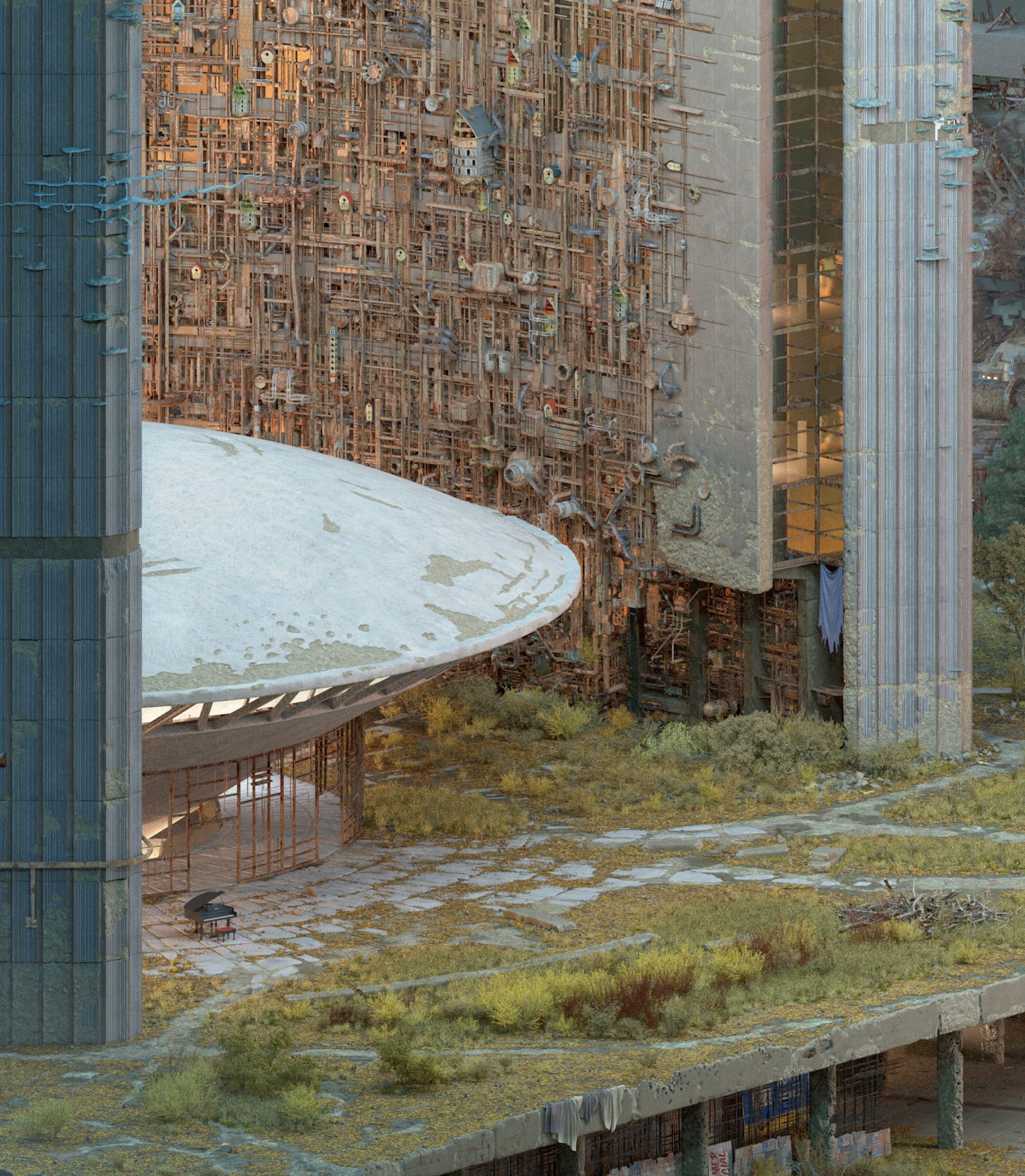
Mathew Borrett has always been fascinated by ruins. So, as an artist, he thought it would be fun to reimagine City Hall in a dream-like state of decay. Using a 3D digital model of Toronto (publicly available on the city’s website), that seemingly simple project sprawled into a three-month endeavour. He created two surreal, hyper-detailed prints—one dark and moody, the other sun-drenched and hopeful—of the area around Nathan Phillips Square, complete with a crumbling Sheraton, a whimsically out-of-place grand piano and a clock tower with no hands.
“I lived in the country outside Orangeville and in the city for about 20 years each, and this new work is a manifestation of that urban-rural hybridity” says 44-year-old Borrett, who does special effects for TV and film. “I’ve always been dissatisfied with the urban environment—it can be a bland, sterile place. I wanted to give it beauty and maybe even dignity.”
The two pieces comprise his new exhibit, Hypnagogic City, on now until March 25 at Red Head Gallery. We asked Borrett to tell us how he created the pieces and shed light on some of their dazzling details.
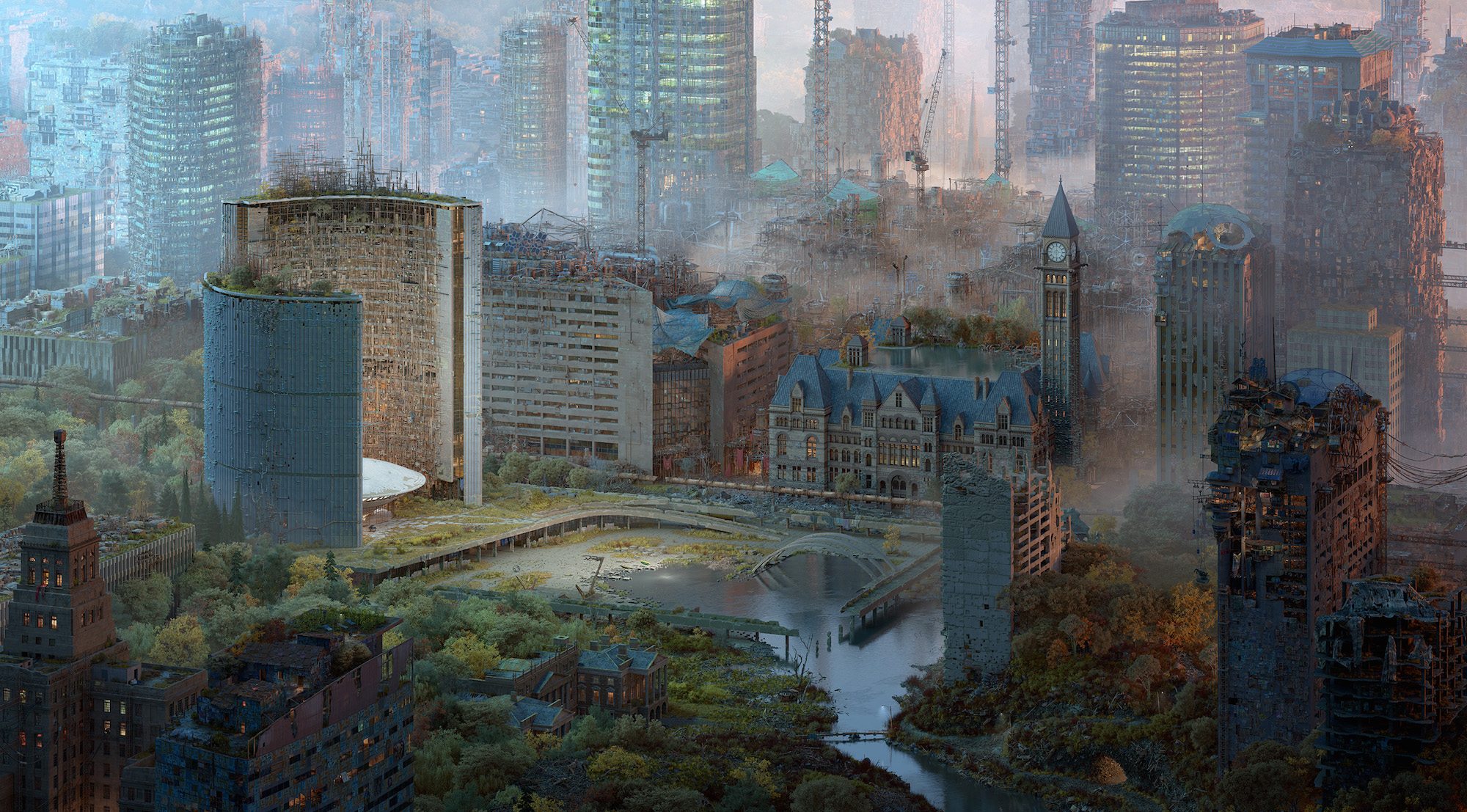
Hypnogogic City is the follow-up to Future Toronto, a similar series that Borrett created for Spacing’s 10th-anniversary issue, which depicts a crumbling Rogers Centre. “City Hall seemed like the next most obvious place,” Borrett says. “This new work is less plausible, more embellished and weirder in some ways.” Some buildings are perfectly intact, while others are half-destroyed, and a hawk-eyed viewer might spot a few out-of-place features: signs for Honest Ed’s and Highway 421, old Victorian houses on top of a building.
Borrett created the 72-by-39-inch print using a variety of modelling and rendering programs, including Modo, 3D-Coat, Clarisse and Photoshop. The city’s 3D model provided the basic shapes, scale and position, but he added all the texture and detail. Some items are models he found online; others he created himself. He duplicated common features like trees, but would then modify them each individually.
“This work tends to get characterized as post-apocalyptic,” he says. “That aspect exists for sure, but at the same time, I tried to steer clear of anything negative or grim. I like to keep it kind of ambiguous, so viewers are unsure if it’s utopian, dystopian or something in between.”
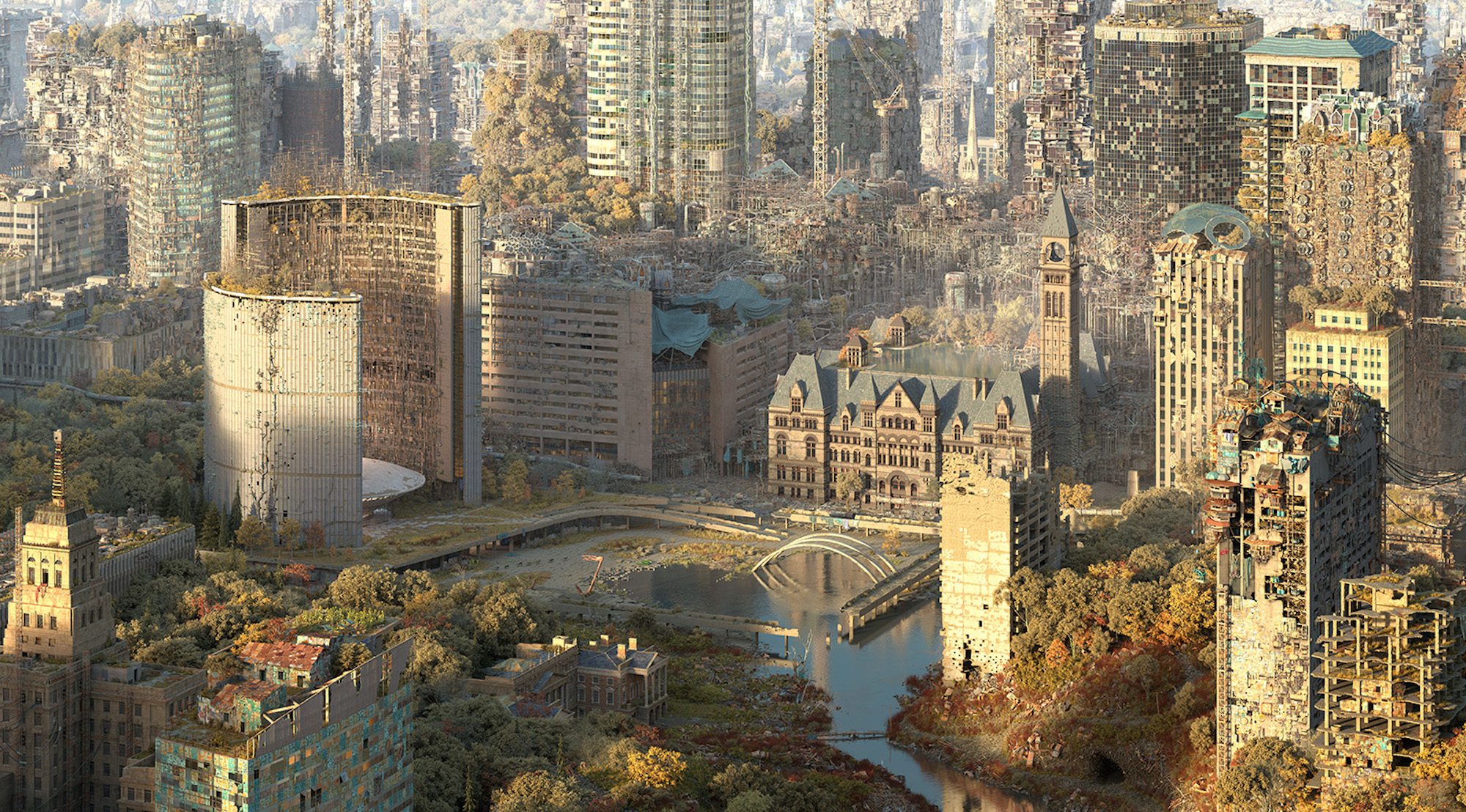
This second version, which is 48 by 26.5 inches, is set in the golden hour, so it feels more optimistic. “I did not set out to change the mood. I was just playing with colour schemes,” Borrett says. “Some people have said the first version is depressing, while this is more hopeful.” The brightness makes some features more visible, such as the shacks and habitations popping out of other buildings. They were partly inspired by a trip Borrett took to Mumbai in 2012. “I saw a lot of British colonial buildings from the Victorian era—dilapidated, but not in ruins. They were patched up in a makeshift way and used to the max with people living on the rooftops.”
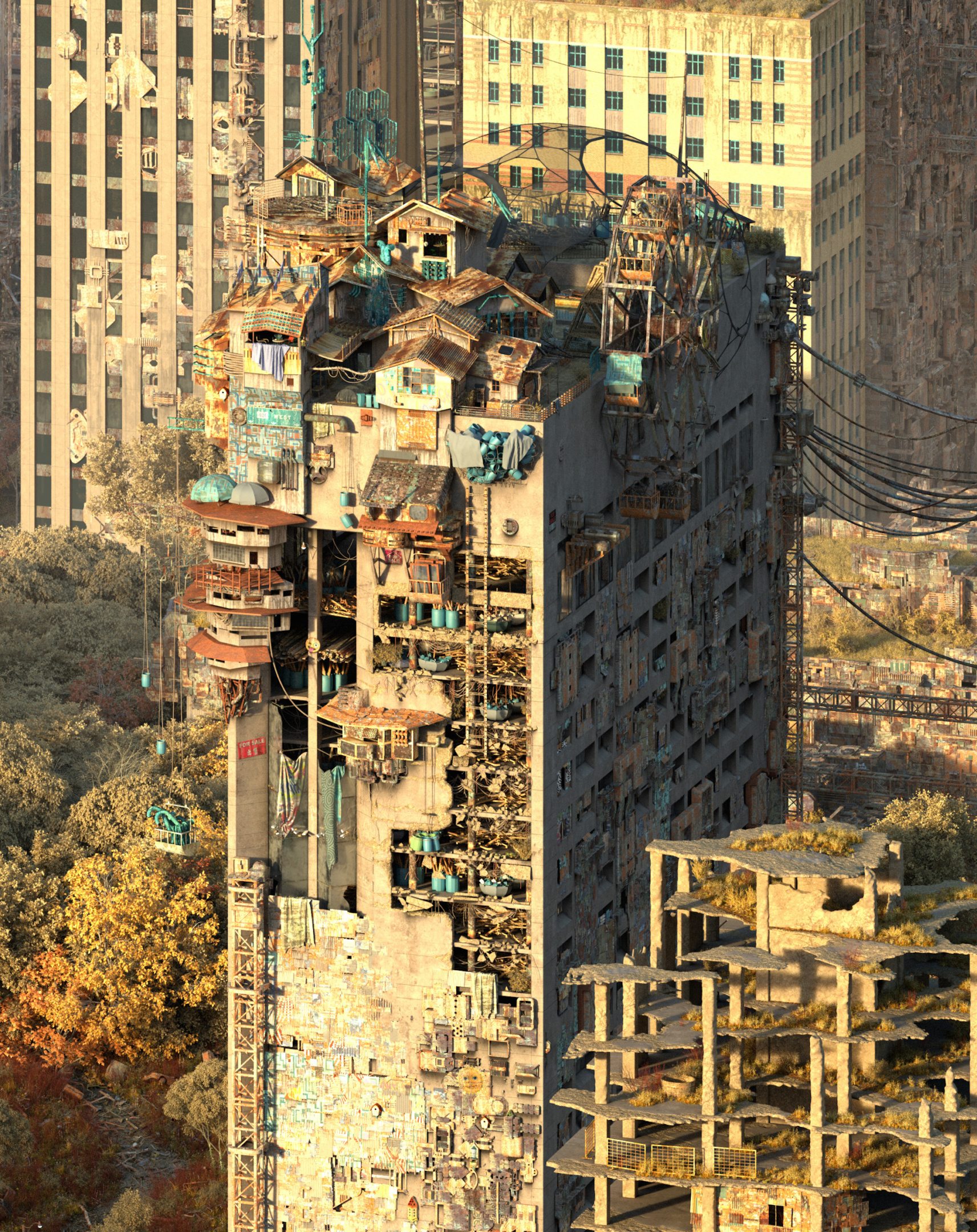
Borrett’s friend, industrial designer Lauren Thomas, created this shantytown at the top of the Hilton hotel. “I was freaking out because I had so little time left to finish the piece,” he explains. “She has a fascination with shantytowns, so I asked her to create one. As an industrial designer, she had a more practical approach that grounded things a little. I am more abstract.” Borrett says he left the heritage buildings mostly as is, instead embellishing the skyscrapers he found more boring and sterile. “After all, Old City Hall was built with solid stone, which will last longer than all the concrete condo towers popping up all over the city.”
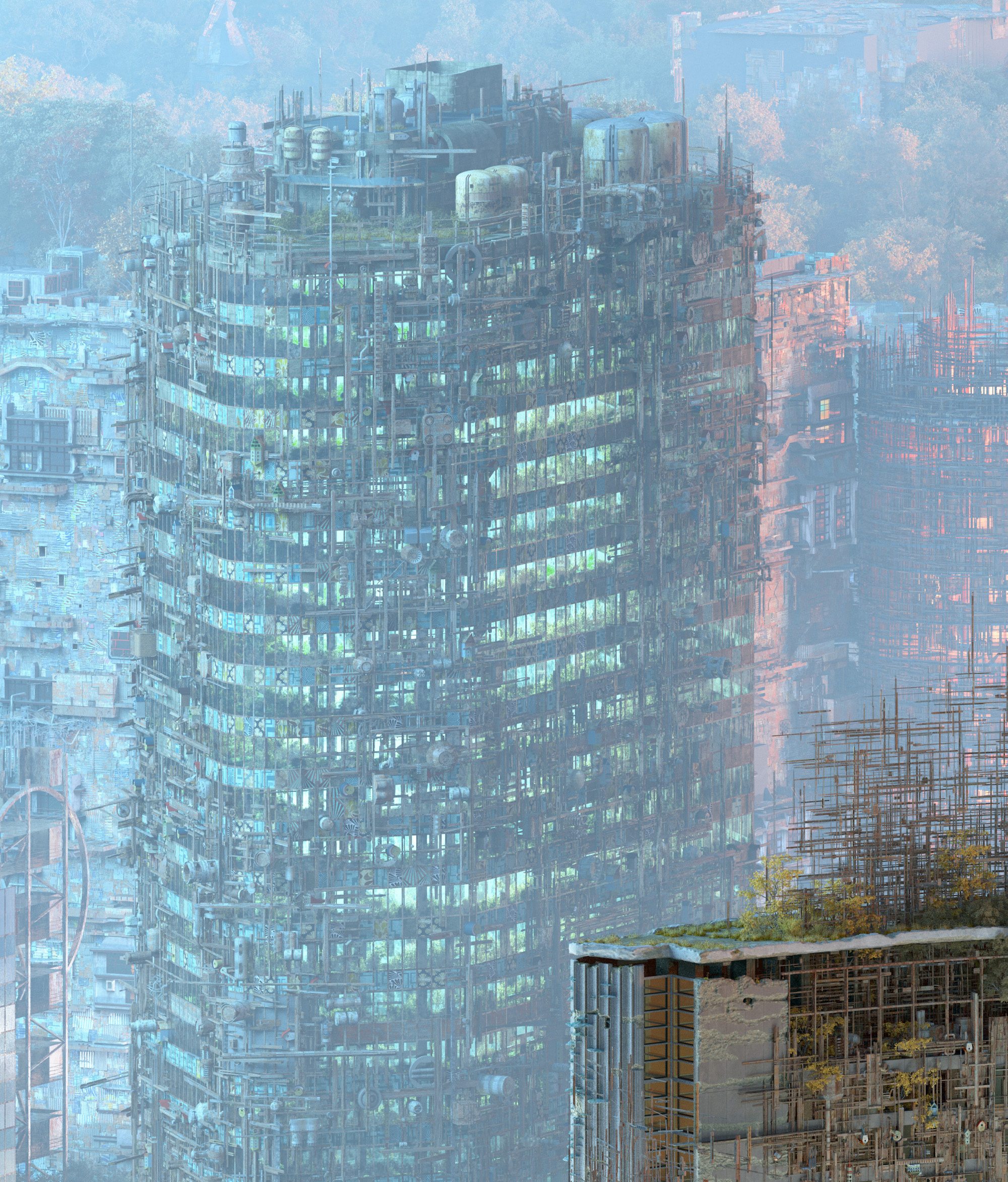
This is a close-up of one of the Eaton Centre’s three towers. “I converted all of them into vertical farm buildings, which speaks to the movement of growing food in high-rises,” he says.

Given the level of detail in the pieces, it’s easy to miss smaller touches. Case in point: this statue of Rob Ford at the edge of a pond atop Old City Hall. “He kind of looks like a laughing Buddha,” Borrett says. “His time as mayor was traumatic for the city, but it had a silver lining: he got us looking more closely at city politics. I didn’t want to be too overt with any political statement. I wanted it to be humorous. He’s one of the Easter eggs hidden in the piece.”
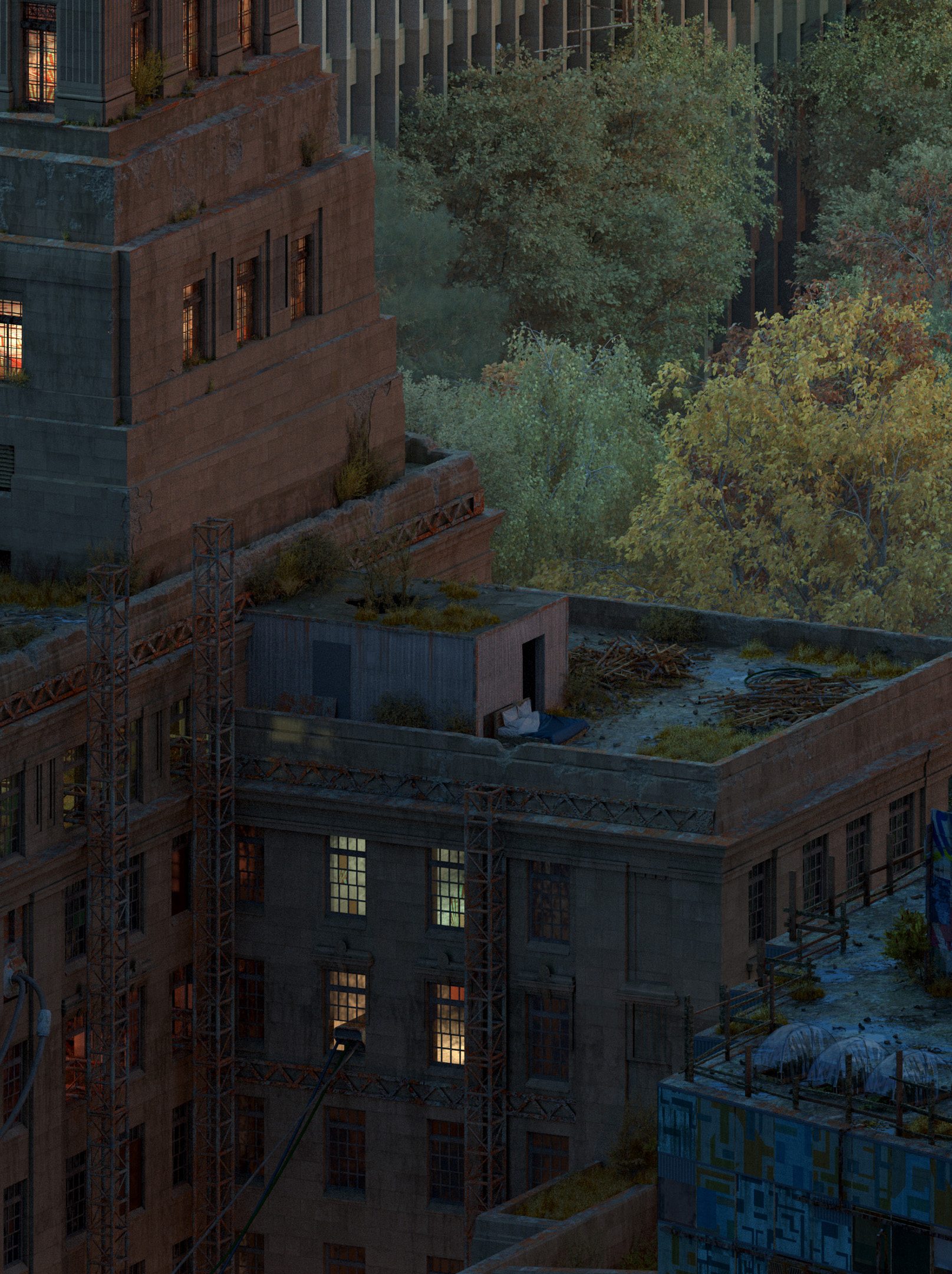
Another surreal flourish: a recently used bed on top of the Canada Life building.
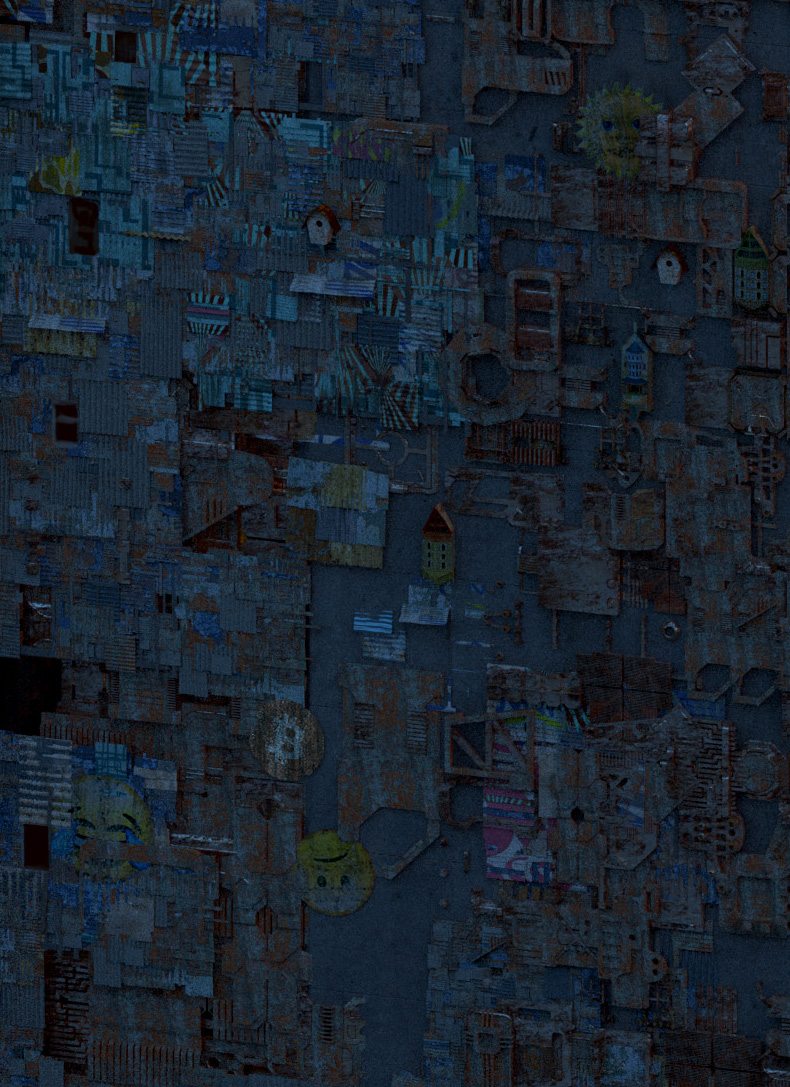
A few well-hidden emojis decorate this wall—and can be found all over the rest of the piece, too.
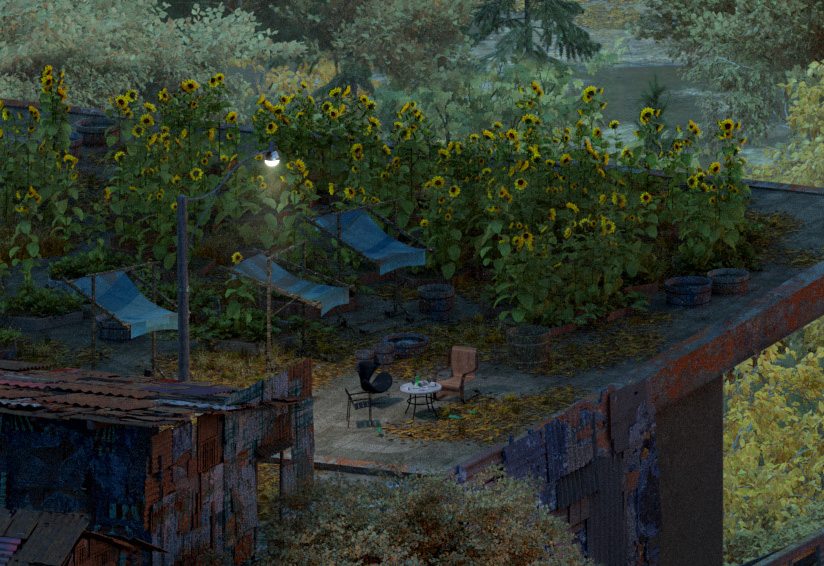
You can spot this abandoned party, lit by a street lamp, at the top of another building near the bottom-left corner of the first image.





